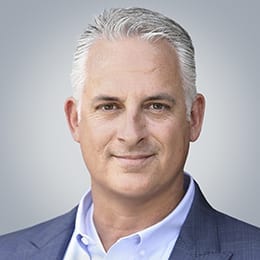Sourcing Biospecimens for Your Research, Part 1 – Webinar Summary
PRECISION FOR MEDICINE | WEBINAR SERIES: THE RIGHT BIOSPECIMEN PLAN FOR YOUR RESEARCH PROGRAM

Jim Boushell
Vice President, Biospecimens Solutions
The impact of preanalytical variability on research outcomes-the result of uncontrolled biospecimen sourcing-is magnified the further the patient is separated from the scientist. As the sensitivity and specificity of technologies becomes finer, it is in disproportion to the prevalence, pace, and pressure of the programs-leading to potentially disastrous outcomes.
On January 13, 2021, Precision for Medicine® hosted Sourcing Biospecimens for Your Research, the first of a 3-part webinar series called The Right Biospecimen Plan for Your Research Program. Precision for Medicine is a global leader in supplying biospecimens, lab services, and CRO services to the life sciences.
Jim Boushell, Vice President, Biospecimen Solutions at Precision for Medicine, introduced the concept of strategic sourcing for biospecimens, illustrating a roadmap toward optimizing this process to mitigate risk, standardize practice, and reduce expense in the pursuit of better research outcomes.

Sourcing the right biospecimens can be immensely challenging. Boushell opened with a brief overview of biospecimens and the obstacles associated with procuring them. He emphasized the complex journey these biological materials undergo from the patient to the scientist, and the need to maintain specimen quality throughout the chain of custody.
Biospecimens have a legacy. Typically, samples are used multiple times throughout the research and development process, so their quality and associated data must be durable. To help companies put a robust biospecimen plan in place, Boushell introduced the concept of strategic sourcing-a centralized process that is widely accepted as a best practice for component procurement in medical device manufacturing. Centralizing the sourcing process adds value not only to the specimens themselves, but also to the overall research programs using them. Other advantages of strategic sourcing include lower cost, more reliable supply, higher quality, and priority access due to established relationships with biospecimen providers.
To illustrate how a biospecimen solutions partner can help to move science forward, Boushell pointed out that the true scope of sourcing goes far beyond finding the best price possible for a requested sample. A multitude of factors-including sample collection and handling, availability, verification, phenotype, diversity, and logistics can impact the value of a biospecimen in research.
To be successful in shifting to a strategic sourcing approach, Boushell outlined 3 cores to strategic sourcing-collecting data, performing analysis, and developing a strategy-and encouraged listeners to think of these cores not as separate, independent initiatives, but as a single, cohesive process.
Data collection involves meeting with the scientists and asking the right questions to identify both the end use of the specimen and the downstream stakeholders. This is vital because it is common for data and volume needs to go beyond the original biospecimen request, so the person procuring the specimens needs to elicit feedback from all potential beneficiaries. The goal of analysis is to evaluate and develop biospecimen specifications and supplier requirements. A lot of frustration and delays in biospecimen procurement and use can be mitigated by having clearer specifications. Finally, strategy development revolves around how to find the right biospecimen sources, confirming what is required for quality guarantees, operational capabilities, timing, and scalability.
To help researchers understand the process involved in strategic specimen sourcing, Boushell outlined 8 steps for implementation that he encourages researchers and procurement agents to use as a checklist when procuring specimens (see Figure 1).
Figure 1. 8 Steps to Strategic Specimen Sourcing

In strategic sourcing, the implementation steps are primarily administrative, but are critical to its success. Whether it is identifying suppliers, buttoning up contracts, ensuring that specimens are appropriately consented for the end use, or shoring up logistics, it is critical to have the internal processes and infrastructure in place to execute. Implementation also involves ongoing quality control, monitoring, and process improvement.
Precision for Medicine's strategic sourcing approach enabled the company-and its customers-to remain operational throughout the pandemic. By continuously reviewing our processes and continually adapting them in response to feedback, we contributed meaningfully to COVID-19-related research while continuing to serve researchers focused on other indications.
To learn more, watch the full webinar on demand here.
